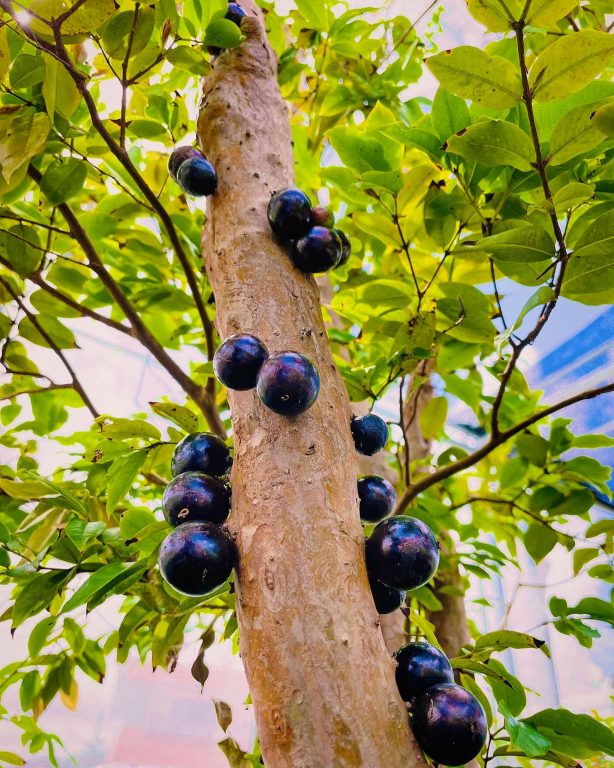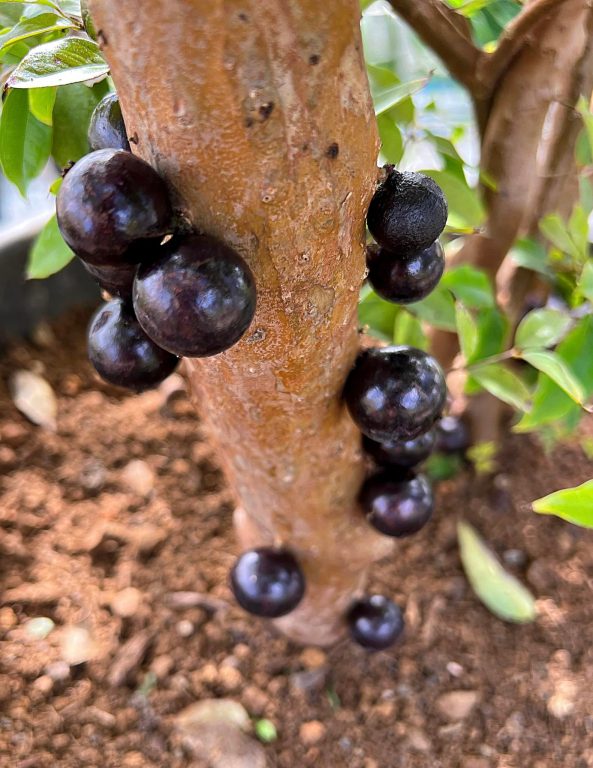Speedy Farm : The jaboticaba (Brazilian grape) fruits are abundant again this year.

Speedy Farm
The fruits of the jaboticaba (Brazilian grape) are tuberous again this year.
This unique fruit, which grows directly on the trunk of the tree, tastes much sweeter than the similar-looking grape. In its native Brazil, the fruit tree is considered so hardy that once planted, it can be harvested and enjoyed by grandchildren for generations to come.
So, why are there Brazilian fruits in Okinawa? There is a deep history to this.
Immigration from Okinawa to overseas dates back 120 years ago (1899).
It began with the emigration of 27 people to Hawaii. The main reason was that Okinawa was very poor at the time, but the social environment of the time, including the abolition of the land division system and the ability to freely sell land, the existence of immigration companies and immigration leaders, and draft evasion, encouraged overseas migration.
Incidentally, the number of emigrants between 1899 and 1938 was 72,134. This is a calculation that about 12% of the Okinawans (Uchinanchu) at that time emigrated. Hawaii, the Philippines, Brazil, and Peru were the most common destinations.
After the end of World War II, the number of overseas emigrants continued to increase after the war, due to the call from families who had emigrated earlier and the Ryukyuan government’s promotion of emigration policies.
The life of the Uchinanchu who went abroad was very harsh.
It was these migrants who helped the suffering Okinawans by sending their hard-earned money to their families in Okinawa to support their families’ finances, and by being among the first to send relief supplies to the burnt-out postwar Okinawa.
The “World Uchinanchu Convention” (first held in 1990 and almost every five years since then) is an event to which overseas Okinawans with Okinawan roots (now second and third generation) are invited.
Although postponed due to Corona, the event is scheduled to be held this fall as this year marks the 50th anniversary of Okinawa’s reversion to mainland Japan. The goal is to create an international exchange network that brings together people with ties to Okinawa.
We must not forget that the history of how the jaboticaba came to Okinawa from Brazil had such a harsh history.
The fact that so many successful overseas professionals have established global networks in Okinawa is another attraction of Okinawa that cannot be found anywhere else.







